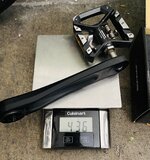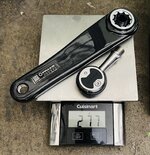mschwett
Well-Known Member
- Region
- USA
I've been loving my Creo to death, but as a newbie to cycling I'm wondering if there's anything (other than technique) that can be done to minimize pedal strikes? Is there anything about the geometry of the Creo that makes these more likely? It seems essentially impossible to pedal through a fast turn on this bike without hitting a pedal on the inboard side - I have to be very careful to not lean much (makes it hard to turn fast!) if I want to apply any power through the turn.
Narrower pedals? Pedals with shorter stems? Slightly shorter crank? Or is this just all "rider error?" It's become second nature to pedal to "inboard-side-up" when on a fast downhill, but I really like to power through flat and uphill turns.
Frame is an XL, pedals are Shimano PD-T8000. It looks like Speedplay or Eggbeaters pedals are much smaller in both key dimensions.
Narrower pedals? Pedals with shorter stems? Slightly shorter crank? Or is this just all "rider error?" It's become second nature to pedal to "inboard-side-up" when on a fast downhill, but I really like to power through flat and uphill turns.
Frame is an XL, pedals are Shimano PD-T8000. It looks like Speedplay or Eggbeaters pedals are much smaller in both key dimensions.

